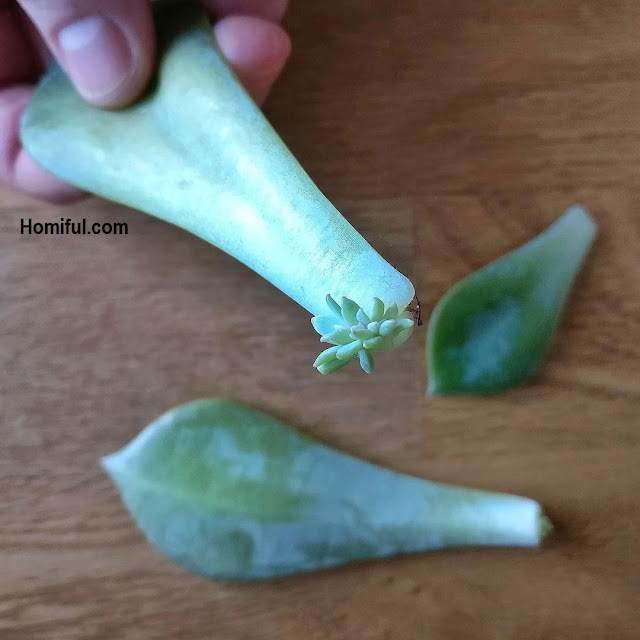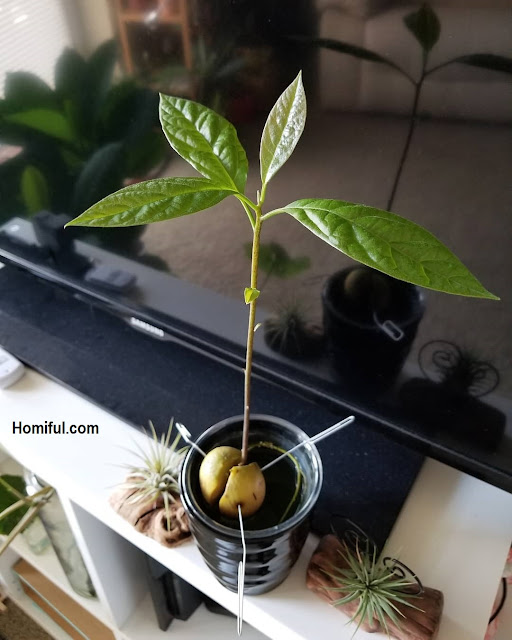 |
| 7 Easy Methods for Propagating Houseplants |
Homlovely.com -- Houseplants can be a great option to beautify your home and space. Plants with beautiful flowers make the atmosphere fresher and cooler. Then, instead of buying new ones, you can multiply plants in a more economical and affordable way. Like in this interesting "7 Easy Ways to Propagate Houseplants" below. Let's check it out!
Propagation is a magical process. You're literally making free plants, and who doesn't want free plants? There are numerous ways to propagate plants, depending on the species. Propagation is simply the multiplication or production of plants by yourself. Different plants need different methods that will work better for each species.
 |
| @thatbotanicguy |
1. Propagation Via Nodes
This technique is commonly used for philodendron and monstera. A node is a cellularly active area of the plant where leaves and roots form. You'll need nodes on your cutting to form roots; otherwise, nothing will grow. The nodes can be seen at the base of each leaf. To clarify, there will be a node at the base of each leaf.
To increase your chances of success, you'll need at least one node per cutting; two nodes is more better. Simple cut below the node once you've determined where it is on the mother plant. After the cutting. you ay need to remove the leaves from the nodes, leaving one to three at the tip. Depending on the plant, the cutting are usually 2-15cm long.
 |
| @ohiotropics |
2. Propagating Via Stem Cutting
A stem cutting is less difficult to perform than a node cutting. So that a beginner can easily use this method. Simply cut a section of the mother plant, including a piece of stem, and remove all but 2-3 leaves from the cutting (leaving the leaves at the tip). Typically, you should end up with a plant that is about 10-15 cm long.
 |
| @monko_the_plant |
3. Water Propagation
The most basic and simple method is to immerse your cutting in water (a small jar will probably be fine), make sure that the node or stem is submerged. Keep the cutting in a warm, well-lit location that is not in direct sunlight.
Change the water every couples of days (to keep the water from going stale and to refresh the oxygen supply in the water), and you'll have roots in a few weeks later. Plant your cuttings into a soil when the roots are a few centimeters long. Your new plant should soon begin to sprout new leaves.
 |
| @melelina_cattleya |
4. Soil Propagation
The most risky method, but excellent if you've an abundance of cutting and don't mind losing a few to rot. Pot up your cutting in well-draining soil, covering the node or stem completely. Water thoroughly and place it in a warm. well-lit location. Place it somewhere you can keep an eye on it, and ensure the soil remains moist.
Succulent mix should work well to this method, or you can add a generous helping of perlite to regular potting soil. To reduce the risk of overwatering the cutting, you can use a small pot. This method has the advantage of eliminating the need to transplant your cutting into soil.
 |
| @jessu892 |
5. Baggie Propagating Method
Because it locks on valueable humidity, this is the method with the highest success rate. It's also a set-and-forget method that we prefer for beginner. Simply follow the step for soil prop, but replace the medium with perlite or sphagnum moss. After you've planted and watered your cuttings, place them all in a plastic ziplock bag.
You can also inflate the bag with your own breath and seal it so that the sides do not come into contact with the cuttings (which could promote rot). Keep the ziplock bag in a warm, well-it location (no direct sun). There is no need to water; simple wait a few weeks and you'll have roots. Remove your cutting from the medium and plant it into soil once the root have formed (a light tug will confirm this).
 |
| @huisje.plantje.beestje |
6. Propagating via leaf cutting
This is the most popular way to propagate begonias. As long as the leaf is healthy, firm, and well-watered, a single leaf can produce other new plants. Using a sharp knife, cut it into sections, making sure to include a leaf vein in each section.
These sections should be dipped in cinnamon and then in rooting hormone. Cinnamon has antifungal properties and aids in the preservation of the cutting. Place each individual cutting in the water or soil medium. In a few weeks or months, you'll notice an entirely new plant sprouting.
 |
| @greatdixternurseries |
7. Propagating via bulbs
The beginners may find this method difficult. You may be hesitant to try this at first, but once you do, you can go from one alocasia to 50 alocasias in a year! The most difficult part is finding the bulbs. To find the hidden bulbs in a mature plant, remove it from its pot and sift through the soil and roots.
Sometimes there are no bulbs to be found, which is fine. Simply return in a few months. When you've found the bulbs, gently peel away the outer layer. This speeds up the rooting process and reduces the possibility of the bulb rotting.
Like this article? Don't forget to share and leave your thumbs up. Stay tuned for more interesting articles from us!
For those of you looking for a minimalist home design that ranges from simple to modern. Please leave your message and comments on Home Lovers on Facebook.
This article should be useful for those of you looking for design ideas and house plans.
Hopefully, you will find it easier to create your ideal home.
Don't forget to share it with your friends and family so that it can help others.
Author : Rieka
Editor : Munawaroh
Source : Various sources
Homiful.com is a collection of minimalist home designs and floor plans ranging from simple to modern. There are also several home decorating tips and tricks in various themes. Our main theme is the design and layout of the house, as well as the inspiration for the living room, bedroom, family room, bathroom, house prayer room, house terrace, and child's bedroom.


